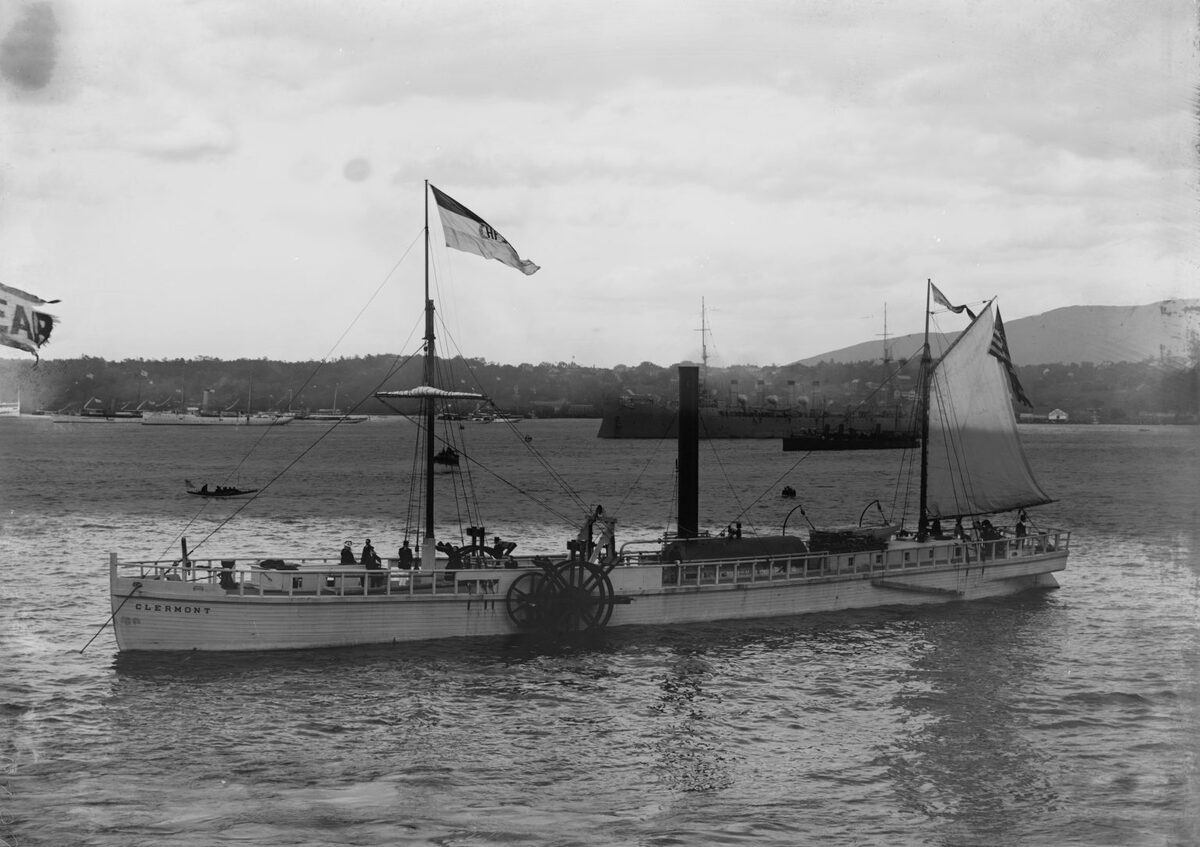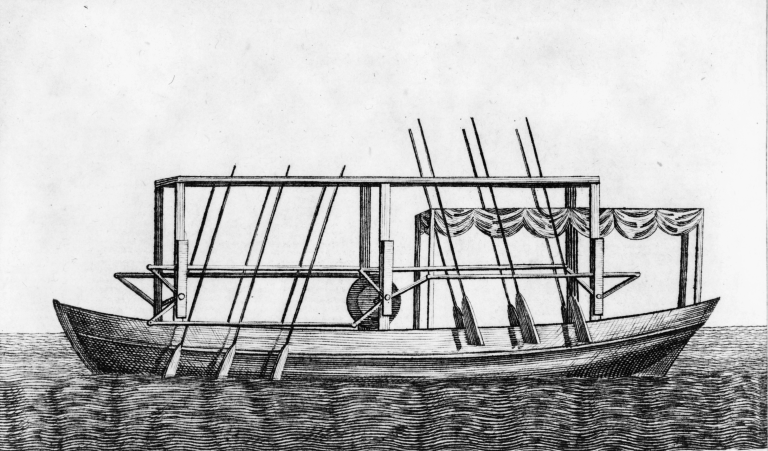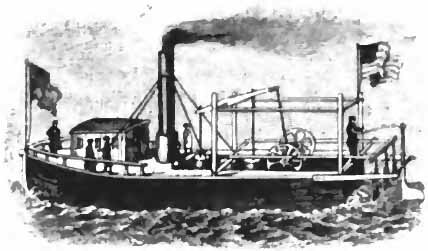A Brief History of Steamboats – Early History
A Brief History of Steamboats: Early History
by Ben Morrill, Visitor Center Site Manager
Steamboats have a long and storied history along the Ohio River, and many sites around the region pay homage to their rich history. With flat hulls and propulsion systems mounted above the water line, the unique construction of steamboats made them ideal for travelling the shallow Ohio River, helping revolutionize transportation and turn southwest Ohio from an unsettled frontier into a bustling commercial center. Throughout the 1800s and even up until the early 20th century, steamboats dominated the waterways of the Ohio River.

Robert Fulton and the Clermont
In August of 1807, inventor Robert Fulton made history as his steam powered boat, the Clermont, travelled from New York City to Albany, New York, successfully making the 150 mile journey in 32 hours. Born in Pennsylvania in 1765, Fulton originally established himself as a painter in Philadelphia before poor health led him to travelling abroad on the advice of his doctor. Departing the United States in 1786, Fulton poured himself into science and engineering while overseas, developing several new inventions for European powers including the Nautilus, an early submarine prototype.
Returning to New York in 1806, Fulton and his business partner Robert Livingston, an American lawyer he met in France in 1803, set about constructing a new steam powered boat that would revolutionize transportation. Officially named the North River Steamboat of Clermont, the boat is popularly known simply as the Clermont. Measuring 142 feet long and 12 feet wide with paddlewheels measuring 15 feet in diameter mounted on either side, the Clermont had a shallow draft of 2 feet, averaging around 5 miles an hour. The Clermont’s successful 32 hour journey to Albany in the summer of 1807 marked the beginning of an era that redefined the culture and landscape of early America.

John Fitch: Father of the Modern Steamboat
While Robert Fulton is perhaps most well-known for his work with steamboats, the Clermont wasn’t actually the first steamboat in the country. Steam engines first appeared in the mid-1700s, often modeled after James Watt’s successful 1769 patent. American inventor John Fitch looked to use this new invention as a propulsion device for a new method of transportation. Beginning in 1785, Fitch set about building a steam powered boat, completing his 45 foot long prototype two years later and successfully demonstrating it before members of Congress in 1787.
Building off of his original prototype Fitch constructed another, larger steamboat, designed to carry passengers and freight that made regularly scheduled trips between Philadelphia and Burlington, New Jersey. After a lengthy patent battle with rival inventor James Rumsey, Fitch secured the first American steamboat patent in 1791. But Fitch’s success proved to be short lived.

Fitch’s poor business sense, along with the sinking of one of his boats in a storm, led to the loss of financial investors who funded his business. Travelling to France in 1793 in an attempt to secure more funding for his new invention, the chaos of the French Revolution forced Fitch to flee to London, although his search for funding proved unsuccessful and he returned to the United States in 1794 empty handed. Fitch died four years later in 1798 at the age of 55, still trying to find new ways to fund his invention.
His revolutionary invention fell into obscurity until Robert Fulton successfully demonstrated the potential of steam powered transport in 1807, leading to Fulton receiving credit as the father of modern steamboats.
Stay tuned next week to learn about the steamboat boom of the 1800s.

